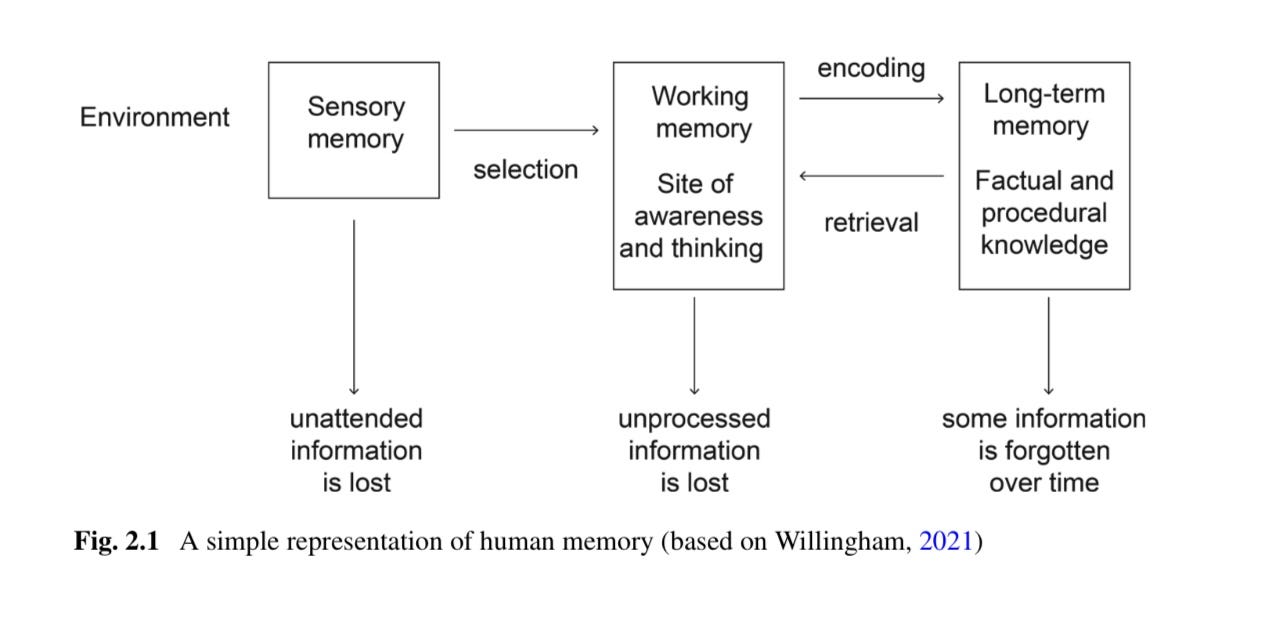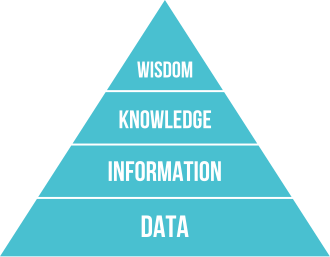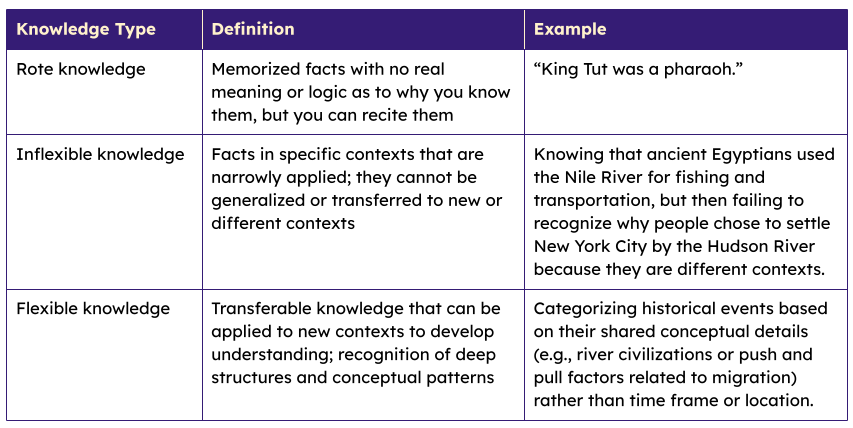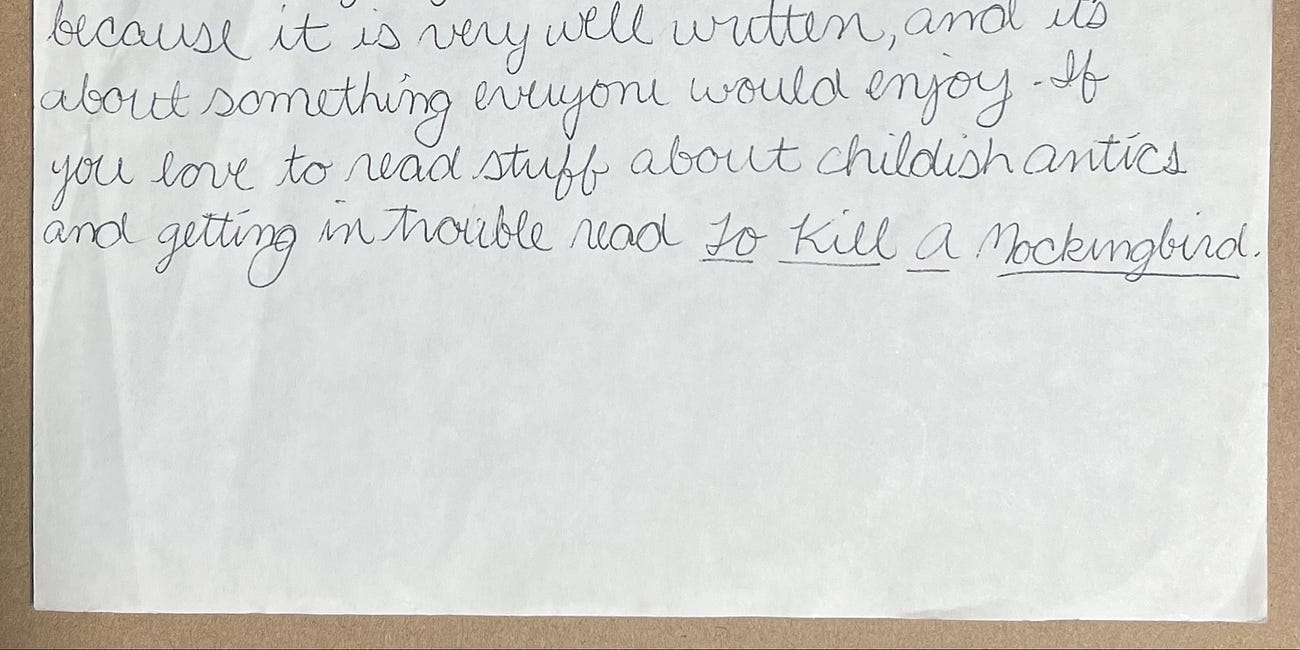Reading Misunderstood
Why understanding texts depends on what kids know
My sister recently shared that my niece and nephew tried calamari for the first time, so I asked them what they thought. My 8-year-old nephew said, “I didn’t really like it. I did like the brown chicken, though.” When he couldn’t explain what he meant, my niece came to the rescue and said, “He liked the breading.”
In that moment, my nephew was actively working to understand “fried foods” and apply what he knows. He consumes a lot of fried chicken fingers. I’m also sure the term “chicken fried steak” hasn’t helped him create more flexible knowledge.
In his world, a fried food with a brown outside + white inside = chicken. So when the fried calamari looked like chicken fingers, he determined the breading must be chicken.
This interaction is a small but powerful glimpse into how understanding develops. My nephew drew from prior knowledge, actively interpreted information from a new experience and our conversation, and began to revise his existing knowledge.
This process plays out every time we read a text. Understanding doesn’t come from decoding alone. It is actively, cumulatively, and unevenly built from what we already know and how well it connects. That’s why reading comprehension is often misunderstood. It is about both what’s on the page AND what’s stored in our brains.
Our brains actively create understanding.
We construct meaning through complicated interactions among memory, knowledge, frameworks, and models.
Let’s start with memory.
We process new information in working memory, and working memory relies heavily on long-term memory, where we organize our language, experiences, knowledge, and thinking structures in frameworks called schemas.
As the following diagram from Developing Curriculum for Deep Thinking illustrates, the connections between working memory and long-term memory are bidirectional.
Working memory processes information that is then stored in long-term memory.
When processing information, working memory can also retrieve knowledge from long-term memory to aid in the processing.
Now let’s move to knowledge.
The interaction of data and information from experiences, texts, and conversations with existing knowledge creates new knowledge. The more knowledge we gain over time, the more we are able to make use of that knowledge flexibly across different contexts to develop wisdom or understanding.
Licensed CC-BY-SA: https://commons.m.wikimedia.org/wiki/File:DIKW_Pyramid.svg#mw-jump-to-license
We store knowledge AND how to process and use that knowledge in our long-term memories. Having the knowledge is key, and being able to use that knowledge flexibly to process new information or inputs in working memory is also key to understanding.
Daniel Willingham describes three types of knowledge in “Inflexible Knowledge: The First Step to Expertise.” These “types” are categorized based on how data and information are processed or learned and then used.
Side note: There are many different “types of knowledge.” If you search for them, you will get a long list of different terminology that signify different ways of categorizing and differentiating among aspects of knowledge. For my explanation of how we cognitively understand, these types suffice, but this is not the only way to define knowledge.
Lastly, let’s look at frameworks and models.
We store knowledge as schemas in our long-term memory. Schemas are deep conceptual frameworks. For example, a schema for “settlements” might include knowledge and related thinking skills about access to water, migration, building and creation, innovation and risk-taking, leadership, and collaboration.
When we encounter a new text about a civilization, we access the schema for “settlements” and pull our prior knowledge into our working memory. It helps us filter new information, make inferences, and update our understanding.
When the knowledge stored in our schemas is flexible, we can recognize deep structures or patterns across different surface-level contexts and easily apply our knowledge in the new contexts (e.g., People settle near water, whether in ancient Egypt or as an American colony).
Schemas feed into mental models, which are temporary and dynamic representations that we construct in our working memory to help us process real-time inputs. The strength of the mental model depends on the richness of the knowledge in long-term memory. The more deeply connected a concept is, the more easily it can be retrieved by working memory. Mental models also help organize inputs for encoding new knowledge into our long-term memory.
For instance, if we read a text about ancient Egypt, our working memory will create a mental model that will simulate what’s happening in the text, help us process why it matters, and connect words and ideas in the text to what we already know. That may include specifics like the Nile River for agriculture and transportation, hieroglyphics, pyramids, pharaohs, and mummification. As we process that information about ancient Egypt, drawing on our schema for “settlements,” we further develop that schema and integrate new knowledge into our long-term memory.
Putting it Together: Reading Comprehension and Language Development
“Reading is one of the most complex mental acts a person can do.” From Developing Curriculum for Deep Thinking
Walter Kintsch’s Construction-Integration (CI) model explains how memory, knowledge, schemas, and models work together to develop reading comprehension.
According to Kintsch, there are three layers to comprehension. The first layer is the surface level. For this level, we read the words and sentences on the page. The second layer is the textbase. For this level, we know what the text says connected to the text’s main idea and hold that knowledge in our working memory. This requires skilled reading or the brain’s integration of word recognition and language comprehension. The last layer is the situation model. For this level, we build a dynamic and personal mental model of the text to infer what the text means by combining the textbase with relevant prior knowledge and experiences (schemas) pulled in from long-term memory. Our situation model of a text enhances the textbase to create an enduring understanding of the text.
So, to understand what we’re reading, we need to:
Have the right knowledge in long-term memory;
Retrieve and apply that knowledge in working memory; and
Organize the text and our prior knowledge into a coherent mental model.
The amount and quality of understanding depends on the quality and breadth of our prior knowledge, the capacity of our working memory, and the depth of our schema structures.
Take my review of To Kill a Mockingbird when I was 11.
While I can decode the surface level, I seem to get stuck on the textbase, and my situation model is far from robust. In fact, it seems to leave out key parts of the text.
Or let’s say for example that a child is reading a text about photosynthesis.
If the child only knows that “plants are green,” the child may decode the text but not understand it. And without knowledge to build the situation model, strategy instruction (like “inferencing”) won’t support comprehension.
If the child thinks “plants use sunlight to eat,” the child has inflexible knowledge about the topic, like my nephew’s knowledge of fried foods. In this case, the child may understand some of the text but not fully grasp how plants survive without consuming food in the same way we do as humans. Without support in revising the misconceptions, this child may not fully comprehend the text.
If the child knows that “living organisms engage in metabolism, or the chemical process of generating energy,” the child will likely build a robust situation model in which the child understands that photosynthesis is a kind of metabolism that converts sunlight absorbed through chlorophyll into energy via a chemical process in the plant’s cells.
The stronger and more flexible the knowledge and more developed the schemas, the better the comprehension. But as Willingham points out, inflexible knowledge is necessary on the pathway to flexible knowledge. Just like my nephew with fried foods, we are constantly updating, revising, and pruning our schemas based on the inputs we receive and how the knowledge we’ve stored supports or contradicts those inputs. Over continued exposures and accessing the same schema, the knowledge we store gradually becomes more flexible and transferable to support more understanding.
Prior knowledge also matters because working memory is limited. If readers don’t have sufficient schemas in long-term memory or they are using working memory to decode the text, working memory may get overloaded and comprehension will break down.
The “cognitive load theory” speaks to working memory’s potential overload and how to design lessons to ensure that knowledge is encoded into long-term memory. This is particularly important when learning to read and making meaning of what we’re reading. According to Developing Curriculum for Deep Thinking:
“With sufficient mastery [of foundational literacy skills], the initially heavy demand on students’ working memories while reading is gradually reduced. This means they can commit more cognitive resources to comprehending what they are reading.”
Language Development
Once we learn to read, we label many of the ideas in our brains with words. We gain most of our words through written texts. Conversations and experiences support and reinforce those ideas. However, there is a limited number of words that we are taught and exposed to directly. How, then, do we learn the vast amount of language we store in our brains?
Landauer, Dumais, and others created the Latent Semantic Analysis (LSA) to try to answer that question, and they discovered that our brains track patterns of meaning across a web of associations. As we encounter words and ideas repeatedly in varied yet meaningful contexts, our brains build rich semantic networks or graphs where word meanings are understood in relation to others. This semantic space makes it possible to infer, transfer, and apply meaning flexibly and grow our vocabulary exponentially without direct instruction.
The LSA shows that we develop more language through inference than direct instruction. So, when we read a text about photosynthesis, we learn about chlorophyll, plant parts, different types of plants, plant cells, pollination, living things as different from non-living things, even if these words and ideas are not even mentioned in the text we’re reading. That’s because there are relationships among all of those ideas in our long-term memory, and as we draw on relevant knowledge and related schemas to comprehend a text, we also further develop the relationships among the words and ideas connected to those schemas.
Classroom Implications
When I taught and later as I designed the Louisiana ELA Guidebooks, my goal was for all kids to read, understand, and express their understanding of texts.
Read: Recognize or decode words automatically and fluently enough to support understanding
Understand: Construct meaning by connecting ideas to prior knowledge
Express Understanding: Communicate meaning through writing, speaking, or other forms
To teach for understanding:
Invest in knowledge over strategies or skills. Critical thinking skills and comprehension strategies (like “inferencing” or “summarizing”) are only useful when supported by and used with knowledge.
Increase reading volume across common topics and encourage students to make connections.
Build science and history knowledge to support the development of flexible knowledge and schemas; students who don’t come to school with rich prior knowledge are at a disadvantage and need the extra, intentional support.
The sequence and design of what students read matters. Random, disconnected texts won’t help students develop schemas or the knowledge needed for comprehension. Organize the course curriculum around coherent topics and revisit concepts in new contexts across weeks or units, deepening understanding and reinforcing schema development.
Use text sets, topically related texts with common language/vocabulary, ideas, and concepts.
Focus on repeated, meaningful encounters with words rather than isolated word lists. Show how words relate to broader concepts, and revisit them across multiple readings.
Build knowledge through listening, experiences, and conversations in addition to reading.
Provide read-alouds and paired and shared reading opportunities for younger or less fluent readers to expose them to complex ideas and vocabulary beyond their decoding level.
Include quality media (e.g., songs, videos, art) and experiences where students encounter and apply their developing knowledge.
Understanding takes cognitive effort, so expect children to have fits and starts. Like my nephew learning about calamari for the first time, kids need time, different experiences to wrestle with developing ideas, and support in expressing their thinking. Conversations, writing, and drawing are important avenues for children to process information independently and in collaboration with others. These opportunities will help them recognize deep structures across diverse texts and experiences and deepen and connect their knowledge so it becomes flexible and transferable.
Summary
Understanding is a dynamic process of making meaning by connecting new information to what we already know. It is not a skill.
Working memory and long-term memory interact to draw on stored knowledge (schemas) to interpret new inputs and encode new knowledge.
Flexible knowledge or the ability to apply concepts in new contexts is essential for comprehension and develops over time from rote and inflexible knowledge.
Schemas are deep, conceptual frameworks that help us recognize patterns and transfer knowledge across contexts.
Mental models are temporary simulations constructed in working memory that help us make sense of texts and other inputs in real time, using our schemas.
Comprehension requires skilled reading and is the result of developing a robust situation model from the textbase and prior knowledge.
Cognitive overload can occur if students lack the necessary knowledge to comprehend a text or if they are not proficient readers and require more cognitive effort to decode a text.
Language develops through repeated exposure to words across topically connected texts, allowing the brain to build semantic networks by recognizing patterns across texts, conversations, and experiences.
Children develop understanding in fits and starts, and they need time, support, and opportunities to express what they’re figuring out.
A Secret Worth Knowing: The key to understanding is already in your mind. It depends on what you know and how well it connects. The more flexible and connected your knowledge, the deeper your understanding.
A Question Worth Pursuing: What must change so that we will spend less time teaching students how to “infer” or “find the main idea” and more time giving them the knowledge and experiences they need to understand?
Next Steps Worth Taking:
Read “The Knowledge Effect” to learn how I’m designing and building an app to support knowledge development and understanding for young children.
Read one or more of the source texts for this post:
Read more about this topic in Know Better, Do Better: Comprehension by David and Meredith Liben, who are mentors, friends, and all-around brilliant, dedicated, and determined educators.
Use a knowledge-rich language arts curriculum such as the Louisiana ELA Guidebooks for reading comprehension instruction.
Stay tuned for a future post about knowledge, experience, and schooling models, as the introduction, evolution, and integration of AI into our lives is leading me to think further about what these will mean in the future.
Share this post with someone who prioritizes skill-based reading instruction to help them see another approach.






Great post! Challenges the notion that propositional knowledge is fine if you just let it stay with AI. Turns out that knowledge is only knowledge if it is embedded in one's head and can be primed to allow construction of other types of knowledge onto it.
Reading is a slow deliberative process that can't be fast tracked. It requires time! Thanks for reminding us that all the AI Brouhaha cannot replace the knowledge acquisition process we gain from Reading.